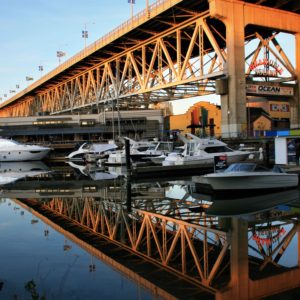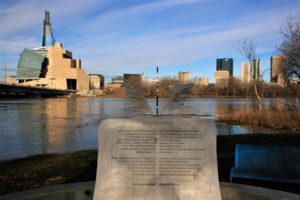I’d heard so much of this city prior to arriving there! In this modern world it’s hard to ignore the information and opinions that are so readily available. Sadly, with access to all that knowledge and information at the tips of my fingers, I wish I hadn’t read or believed what I read! Sadly, preparation can lead, transmogrify even, into expectations. It is my sad experience that expectation all too often leads to disappointment. They tell me that Vancouver is one of the best cities in the world in which to live. So, I arrived in the city full of hope only for those expectations to dissipate on sight of the place. I left underwhelmed. Let me elaborate and give another take on Vancouver.

Vancouver’s is set at the bottom of the mountains that almost rise from the sea and this means that land is at a premium resulting, predictably for these parts, in heavily populated skyscrapers. Vancouver is similar to New York in this respect with both places dominated by ugly skyscrapers. NYC may be a concrete jungle, but Vancouver is like a solar farm of glass. I struggled to find Vancouver’s heart and soul and had real issues trying to identify with the city. I realise that I am starting to sound a bit like our Prince Charles and his famous use of the phrase ‘monstrous carbuncle’ in relation to what was then modern architecture. I am amazed to discover that it is 35 years since he made his speech. The city lacked any form of cultural identity, yet another of these modern cities around the world. Was this characterless jungle due to the city’s relatively young age? Was it its multicultural population (surely this should give rise to diversity in design?)? Was it its modernity? Did I react to its drug smelling community? Was it the dirt and smell that got to me? I’m searching for the answers as to why I was disappointed.

Its location is prime for exporting Canadian products to Asia. This results in a busy and productive port and many photographic opportunities of dirty great boats waiting in the harbour. The recurring theme from this trip has surely to be about how we are damaging the world. As photogenic as these colourful behemoths were, the sight of them was a massive reminder the damages being caused.

The bays represent the mouth of Vancouver. The boats sail past the lungs of the city – Stanley Park. The green space there perhaps provides the heart, Downtown, its much-needed oxygen to breathe. Although the trees lined along the roads in parts of Downtown provide tiny air-sacks they are trapped by the glass monstrosities above.

South from Stanley Park, following the edge of the bay, leads to my favourite area of the city. As English Bay leads to False Creek, there are a number of sheltered harbours, lovely walks, idyllic “bars” and views aplenty. This really is the best of Vancouver. Why everyone isn’t at Sunset Beach in the evening I will never know as the sun paints the sky a crimson orange and it provides the perfect spot to relax and reflect.

As for the rest of main Vancouver – the suburbs of Gastown, Yaletown and Downtown in particular – which I had hoped to deliver so much, all failed spectacularly. Dirt, smell, homelessness, litter – it was far from the spectacular impression that had been created in my mind. At times I thought, ‘Am I actually walking around in a Canadian city?’ The city boasts one of the largest Chinatowns in North America, an area of no personal interest, but adds to the common lack of English being spoken. What is becoming noticeable in cities these days is the alarming number of homeless people and Vancouver was no exception but the scale of it here is greater than that seen in any other city visited recently. Are drugs the cause? The addicts’ erratic behaviour and way of survival wasn’t pleasant to see and was there for all to see. Is this now a global problem that is spiralling upwards in terms of quantity of addicts and spiralling downwards in terms of ambiance quality? Or are such people victims of a society that places so much store by work and wealth creation leading to the polarisation of its members. Perhaps a lot of the misery is self-inflicted but the juxtaposition of clinical, pristine, shiny, corporation buildings and the filthy conditions in downtown Vancouver is horrendous.

North of the city the Seabus (not a ferry) operates across to Lynn Quay. An up and coming area with a charming market, restaurants and a lovely view of the cityscape. It was from here I was recommended to get the bus to Lynn Canyon. Well worth it with free entry an added bonus.

South of the city water taxis work around the heavily populated harbour. I didn’t take advantage but rather stretched my legs and walked both sides. There are three main bridges providing both pedestrians and vehicles a way across the water. At the far end is the BC place stadium, a truly soulless place. Home to the Whitecaps, it seems an expensive place for just “football”. I hope other sports use and fill it to capacity to generate the atmosphere it warrants for its considerable investment.

So as my time in Vancouver comes to end, I head back to Sunset Beach to watch the sun set yet again. The train ride across Canada awaits. Vancouver, I’m sorry, I still can’t work out what all the fuss is about.
Vancouver, British Columbia, Canada






